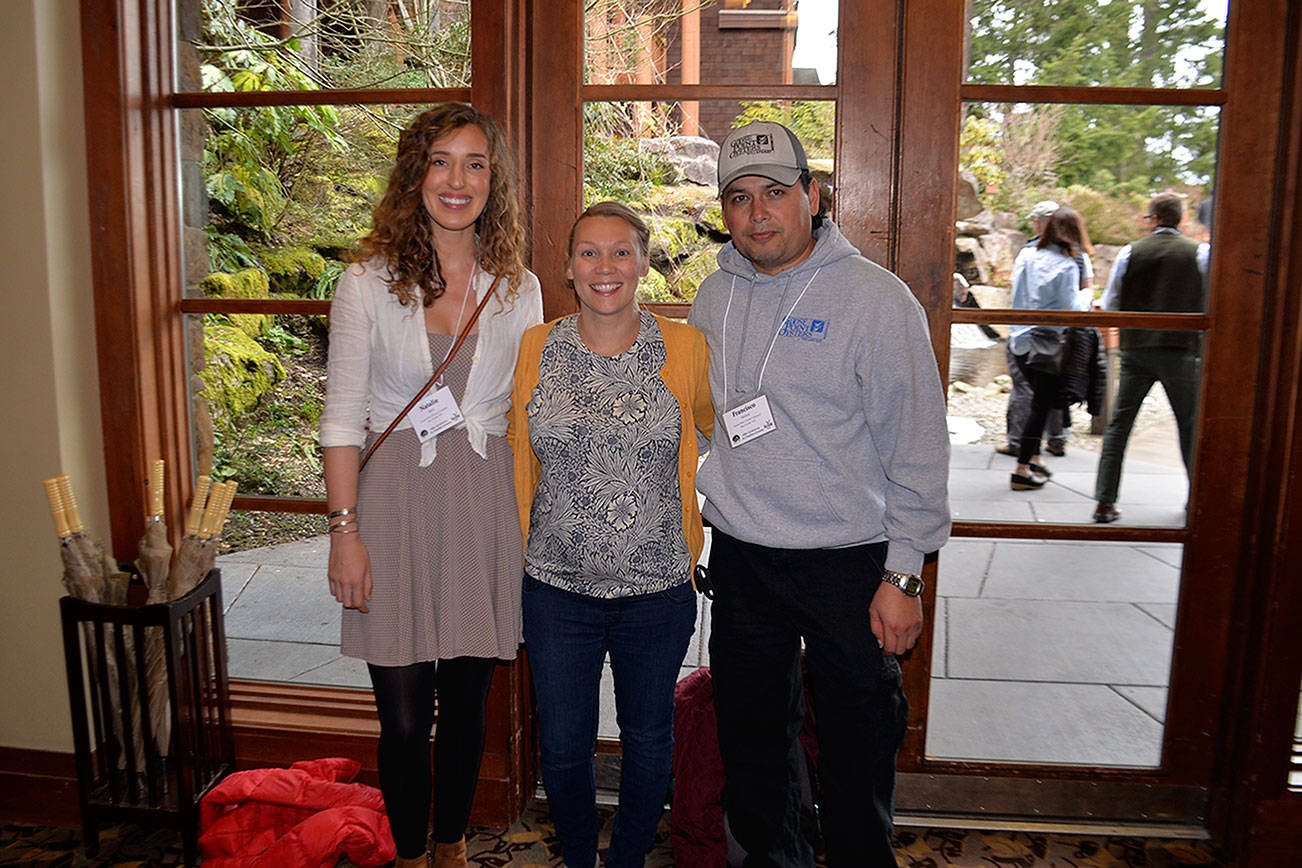A gathering of scientists, oyster growers and state officials spent part of the day Monday talking about ways to fix a vexing burrowing shrimp problem that growers say threatens their businesses.
There seems to be no easy-fix solution on the horizon, but several presenters at this year’s Shellfish Growers Conference in Union suggested potential ways to kill and control the shrimp, including the use of heavy, metal rollers in one example and adding simple table salt in another.
In recent years, many oyster growers in Willapa Bay and Grays Harbor have struggled to deal with the native burrowing shrimp, also known as ghost shrimp, which ruin oyster farms by burrowing and loosening the beds and causing the oysters to sink and suffocate. Some growers want to use a pesticide called imidacloprid, a solution rejected by the state Department of Ecology. A bill that would allow it appears to be dead in this legislative session.
For about a year now, members of the state’s Department of Natural Resources have partnered with the oyster growers and are testing mechanical methods to control the shrimp. Cinde Donoghue, scientist at DNR, presented findings from last spring and summer’s test of three methods: dry harrowing, wet harrowing and flooding.
The latter two methods were less effective during tests between last April and September, but dry harrowing produced significantly better results with removing shrimp. It was tested on tideland where burrowing shrimp naturally inhabit, not oyster farm land.
Using a tractor called a marsh master, the department attached a large metal roller with protruding tines that dig into the ground and disrupt shrimp, ripping them out of the ground. It doesn’t typically kill the shrimp, but it attracts birds and fish to come and eat the shrimp pried from the burrows, Donoghue explained.
The tests showed on average an 89 percent reduction in density of shrimp in the ground after the tests, but some growers in the audience were concerned it wouldn’t be feasible for actual oyster beds. Kathleen Nisbet Moncy, owner of Goose Point Oysters, said some growers’ previous tests on disrupting shrimp resulted in soil compaction that ruined the shellfish ground and made it hard like cement.
However, Moncy said the growers are still interested in DNR’s hope to test the dry harrowing process on beds. If things go well, DNR would like to test further during favorable tide cycles this spring and summer, said DNR strategic adviser Gabe Kaemingk.
“This is a great start, we’re chipping away at the problem and starting to learn the mechanical control efficacy, but also, ‘Is this practical?’” said Kaemingk.
A group of students from the University of Washington conducted tests to see how effective table salt is at killing juvenile shrimp in water-filled containers. The study found that 100 percent of shrimp were killed at two to three times the salinity of the surrounding water within six hours. The test was also conducted on dungeness crabs, which were killed or impaired at the highest salt levels tested. The students said a next step would be to see if there are salt levels that are effective at killing the shrimp while not impairing crabs.
Some audience members questioned whether salt could actually be applied on a larger scale to make it useful for oyster growers, and if it would work as well on adult shrimp.



